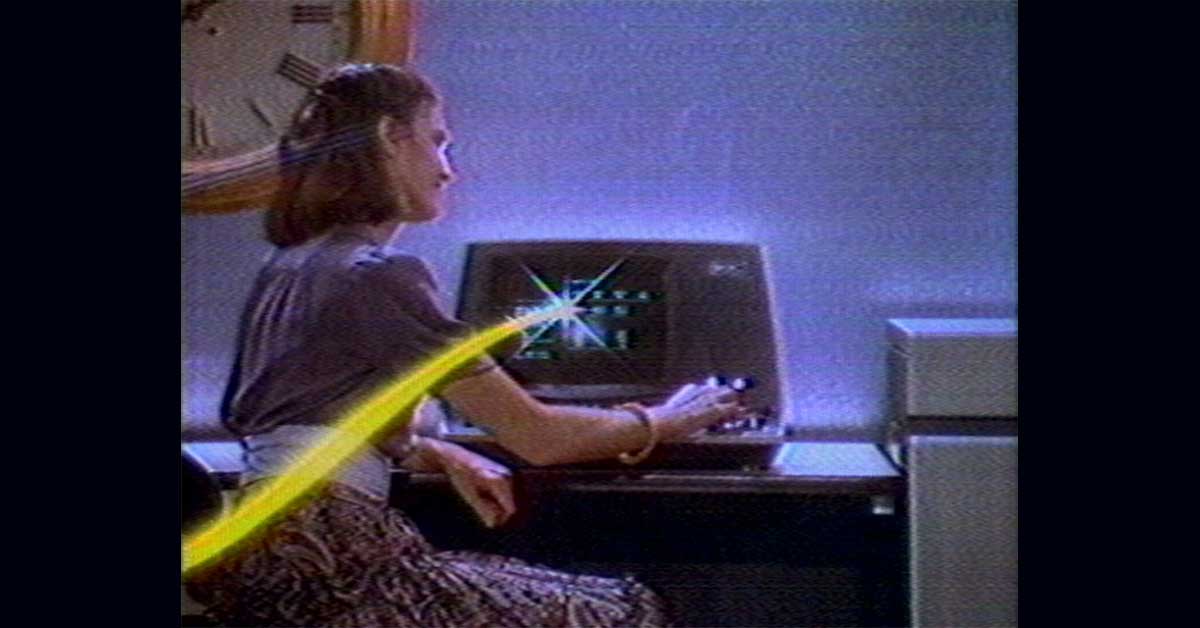29 December 2024
Preview exhibition highlight in 2025 in Vienna: 'Radical Software: Women, Art & Computing 1960 - 1991' at the Kunsthalle Wien

The 'Culture' section has been the most viewed on Fashion.at in 2024, not merely because it featured the highest number of articles this year. Unlike quick trend reports with immediate shopping suggestions for shoes, handbags, or glamorous insights into popular looks from trendsetters, the topics covered in this section delve deeper into cultural narratives. This sustained interest in culture underscores the unique preferences of our audience. To build on this success and continue engaging readers with compelling content from the cultural sphere, Fashion.at explored the upcoming exhibition calendar in Vienna to identify another event that could resonate with our audience.
'Radical Software: Women, Art & Computing 1960-1991' from February 28 to May 25, 2025 at the Kunsthalle Wien in the MuseumsQuartier is such an exhibition that sounds promising. Let's start with the years of the title: 1960 - 1991.
The history of women in computing includes pioneers such as Ada Lovelace, the first female computer programmer in the 19th century; Grace Hopper, who developed the first compiler in the 1950s; or Joan Clarke, a cryptanalyst and codebreaker during World War II. These and other women laid the groundwork for women's participation in the digital revolution.
But all of these women were active before the 1960s.
The main focus of the exhibition is not the history of the digital revolution with a look back to the roots. The upcoming exhibition 'Radical Software: Women, Art & Computing 1960-1991' celebrates the pioneering role of women at the intersection of art and computing in the pre-internet era. Featuring the work of some fifty artists, the exhibition explores painting, sculpture, photography, film, installation, and an extensive collection of computer-generated art. A feminist perspective frames the evolution of artists' experiments with computing as both a tool and a subject, highlighting the critical yet often overlooked contributions of women in the field.
The list of artists includes approximately 50 names from around the world.
The artists share several thematic and methodological focuses, rooted in their experiments with technology, computing, and the intersection of art and science. One aspect is common to all: The exploration of technology - computers, video, digital imaging, and algorithms - as a creative medium. Some key themes in the work of the announced artists are:
1. Generative and Algorithmic Art
Several of the artists in the exhibition were early adopters of generative art, creating works based on algorithms and code. Vera Molnár, for example, is particularly known for her algorithmic explorations, creating art that questions randomness and control in computational processes.
2. Feminist and Political Perspectives
A critical feminist perspective runs through the work of most artists, such as Valie Export and Dara Birnbaum, who interrogate gender roles and social constructs through multimedia installations and video art, and critique the cultural systems that have shaped the representation of women in media and technology.
3. Fusion of Art and Science
Many of these artists integrate scientific methods, mathematical systems, and computational logic into their art. Hanne Darboven used rigorous numerical systems and timelines, while Channa Horwitz developed visually intricate notations that combined aesthetics with precise logic.
4. Interdisciplinary Collaboration
Several artists, such as Colette Stuebe Bangert and Charles Jeffries Bangert, worked across disciplines, combining their artistic insights with scientific and technical expertise. This merging of fields highlights the importance of collaboration in early digital and computational art practices.
5. Focus on Time, Process, and Systems
A shared fascination with time, systems, and process underlies much of their work. Lillian Schwartz and Sonya Rapoport have explored the transformative processes of data visualization and multimedia art, often emphasizing the interplay of time and change.
6. Engagement with identity and the body
The body and personal identity often serve as focal points. Artists such as Lynn Hershman Leeson and Barbara Hammer have explored issues of selfhood, surveillance, and embodiment in relation to technology, foregrounding how technology shapes our understanding of identity.
This is a preview by Fashion.at of the list of participating artists and not a preview of the themes that will be presented in the exhibition. No further information about the exhibition has been published yet, except that it will be accompanied by a richly illustrated catalog entitled 'Radical Software: Women, Art & Computing 1960-1991', available in English and German. The 224-page publication includes essays by experts such as Tina Rivers Ryan and Margit Rosen, a detailed timeline from 1613 to 1991, and 27 new artist interviews. Edited by Michelle Cotton, the Artistic Director of Kunsthalle Wien, the catalog is described as providing in-depth insights into the historical and artistic contexts of the works presented. Although the exhibition will not open until February, the catalog can already be pre-ordered online (shipping worldwide) at kunsthallewien.at.
Image courtesy Kunsthalle Wien: Dara Birnbaum, Pop-Pop Video: Kojak/Wang, 1980, © Courtesy Dara Birnbaum und Electronic Arts Intermix (EAI), New York.
|

